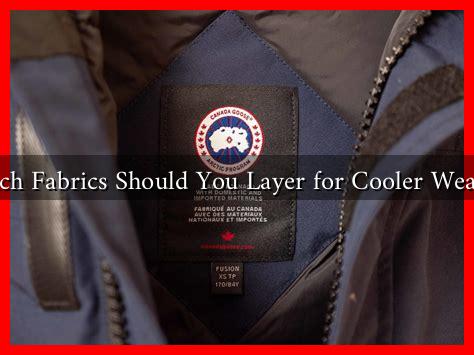-
Table of Contents
Which Fabrics Should You Layer for Cooler Weather
As the temperatures drop and the leaves begin to change, the need for effective layering becomes paramount. Layering not only keeps you warm but also allows for versatility in your wardrobe. Understanding which fabrics to layer can make a significant difference in comfort and style. In this article, we will explore the best fabrics for layering during cooler weather, their benefits, and how to combine them effectively.
The Importance of Layering
Layering is a technique that involves wearing multiple garments to create a cohesive outfit that can adapt to changing temperatures. The primary benefits of layering include:
- Temperature Regulation: Layering allows you to adjust your clothing based on your activity level and the weather.
- Versatility: You can mix and match different pieces to create various looks.
- Style: Layering adds depth and interest to your outfit.
To achieve the best results, it’s essential to choose the right fabrics for each layer.
Essential Fabrics for Layering
When it comes to layering for cooler weather, certain fabrics stand out due to their properties. Here are some of the best options:
1. Base Layer Fabrics
The base layer is the first layer of clothing that sits directly against your skin. It should be moisture-wicking and breathable. Here are some excellent fabric choices:
- Merino Wool: Known for its temperature-regulating properties, merino wool is soft, lightweight, and excellent at wicking moisture away from the skin.
- Synthetic Fabrics: Materials like polyester and nylon are great for moisture management and drying quickly, making them ideal for active wear.
- Silk: While not as common, silk can be a luxurious base layer that provides warmth without bulk.
2. Mid Layer Fabrics
The mid layer provides insulation and retains body heat. Here are some popular options:
- Fleece: Fleece is lightweight, warm, and breathable, making it a popular choice for mid layers.
- Down: Down jackets or vests offer excellent insulation and are lightweight, but they can be less effective when wet unless treated.
- Wool: Traditional wool sweaters or cardigans provide warmth and can be stylish as well.
3. Outer Layer Fabrics
The outer layer protects you from wind, rain, and snow. Here are some effective materials:
- Waterproof Fabrics: Materials like Gore-Tex or other waterproof membranes are essential for keeping you dry in wet conditions.
- Windbreakers: Lightweight, wind-resistant fabrics can help shield you from chilly winds.
- Heavyweight Wool or Blends: For a more stylish option, consider a wool coat that provides warmth and a classic look.
Combining Fabrics for Optimal Comfort
To maximize the benefits of layering, it’s crucial to combine fabrics effectively. Here are some tips:
- Start with a Moisture-Wicking Base: Choose a base layer that will keep you dry and comfortable.
- Add Insulation: Layer a fleece or wool mid-layer for warmth.
- Finish with a Protective Outer Layer: Ensure your outer layer is suitable for the weather conditions you expect.
For example, a typical layering system might include a merino wool base layer, a fleece mid-layer, and a waterproof jacket on top. This combination allows for flexibility and comfort throughout the day.
Conclusion
Layering for cooler weather is an art that combines functionality with style. By understanding the properties of different fabrics, you can create outfits that keep you warm, dry, and comfortable. Remember to start with moisture-wicking base layers, add insulating mid-layers, and finish with protective outer layers. With the right fabric choices, you can enjoy the beauty of the cooler months without sacrificing comfort or style.
For more information on layering techniques and fabric choices, check out resources like REI’s Layering Basics.

